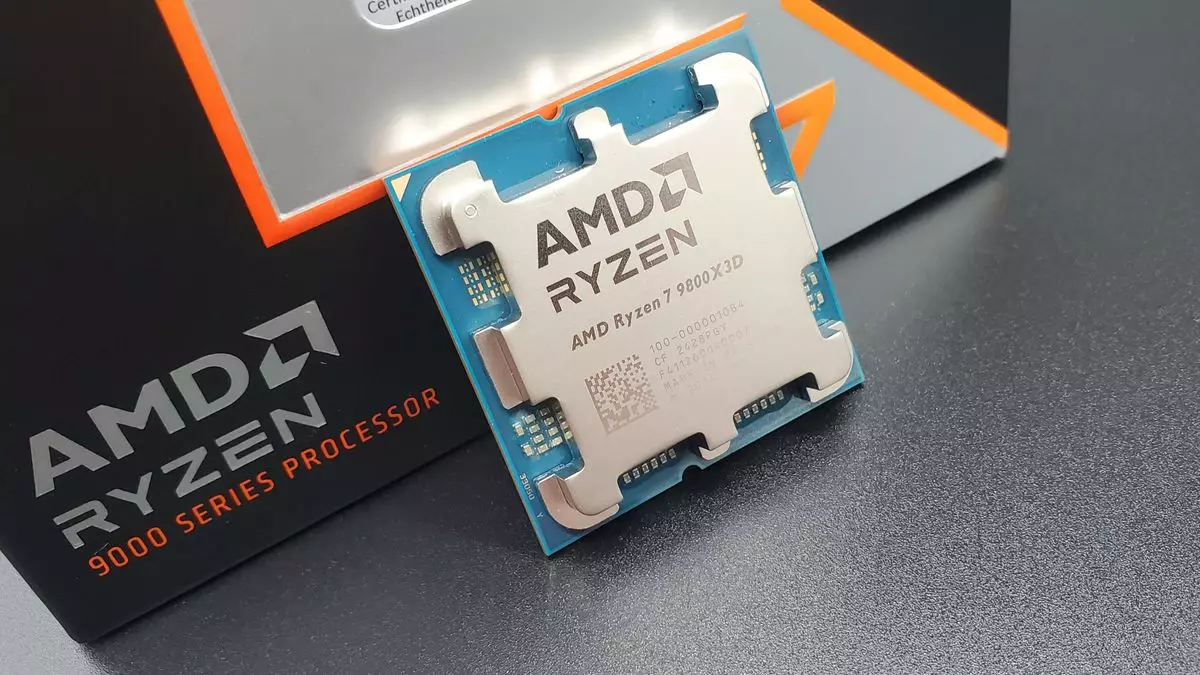The tech industry is ever-evolving, particularly in the sectors of graphics and processing units. As excitement builds around Nvidia’s latest graphics card lineup and AMD’s wish list for future releases, it’s crucial to examine a pivotal aspect: the recent developments in the CPU market courtesy of both AMD and Intel. With AMD launching its much-anticipated 9000-series ‘Zen 5’ processors, set against Intel’s more modest Core Ultra 200S ‘Arrow Lake’ offering, the landscape is shifting dramatically and the competition is heating up.
AMD’s recent performance during the holiday period has been noteworthy. According to CEO Dr. Lisa Su, the company experienced its highest sell-out figures in several years amidst the launch of new gaming CPUs. The popularity of products like the Ryzen 7 9800X3D is evidence of a stronger consumer preference for AMD’s offerings, despite the availability challenges that many consumers have faced in finding reasonably priced units post-launch. Notably, the rapid sell-out could suggest robust market demand driving sales, but it is also important to recognize that scarcity can arise from supply chain issues, which could potentially temper the triumph of high sales figures.
Furthermore, AMD’s consistent shipping flow through January illustrates its efforts to meet the pent-up demand. The company has indicated that, contrary to Intel’s performance, it is riding a solid wave of adoption for its new processors. As such, the CPU market is skewed favorably towards AMD, especially given the underwhelming competitive response from Intel’s latest generation of processors, which have not significantly disrupted the status quo.
Contrast this with Intel’s trajectory; their Core Ultra 200S lineup has thus far failed to make a compelling case for consumers. The latest processors have had mixed reviews, with reliability and stability being particularly highlighted as areas of concern. Many of Intel’s previous generations have suffered from various instability issues as well, and this backdrop does little to enhance consumer confidence. It’s fair to assert that if Intel had introduced a stronger contender, the CPU market landscape could look remarkably different today. In a vacuum, AMD’s triumph is not entirely unexpected, given that they have captured significant market attention while Intel fumbles with offers lacking in performance incentivization.
However, it’s vital to note that the high demand for AMD’s products is almost cyclical. As Intel appears to be playing catch-up, the stakes for AMD remain high, and they must continue to innovate or risk losing their hard-fought market share in a rapidly changing tech environment.
The competition isn’t solely defined in desktop CPU offerings; the mobile processors’ arena is equally engaging. AMD has made strides with its AI 300 ‘Strix Point’ series, which has gained traction not only within laptops but also in niche handheld devices like the OneXPlayer OneXFly F1 Pro. This adaptability and integration into various devices reflect a robust strategy to capture market segments that value portability without compromising on performance.
Intel, however, isn’t entirely sidelined. Its Core Ultra 200V ‘Lunar Lake’ mobile processors are present in devices such as the MSI Claw 8 AI+, showcasing improved efficiency. Yet, the question of raw performance remains a defining characteristic, and in gaming scenarios, Strix Point chips have proven their mettle against competitive offerings. The efficiency battle is ongoing, yet what stands out is the closeness of offerings in the mobile sector compared to the stark advantage AMD has in the desktop market.
Both companies are bracing themselves for seasonal shifts that affect sales. Nevertheless, AMD’s recent performance has created optimism about maintaining a stronghold as we transition into the new year. Dr. Su’s comments highlight an expectation for growth in the desktop segment, suggesting an ongoing positive trajectory despite the challenges.
While AMD seems well-positioned with burgeoning sales numbers and a fortified product lineup, Intel’s woes present a stark contrast. Their ability to recover will depend on how effectively they can innovate in a market that has shown readiness to embrace change. As consumers eagerly await more stock of popular processors like the Ryzen 7 9800X3D, it remains paramount for both companies to stay responsive to demand and product capabilities. The tech landscape is nuanced, and success will require navigating these complexities intelligently over the coming months.

